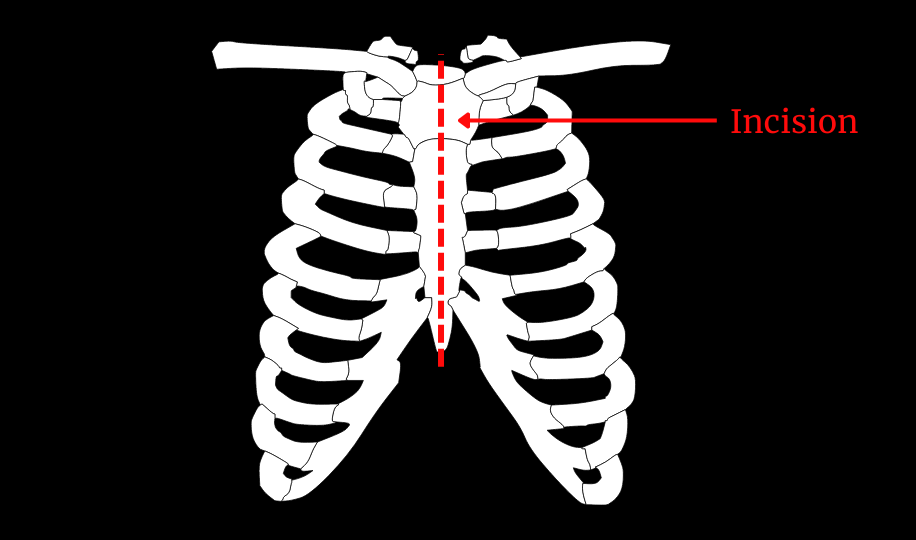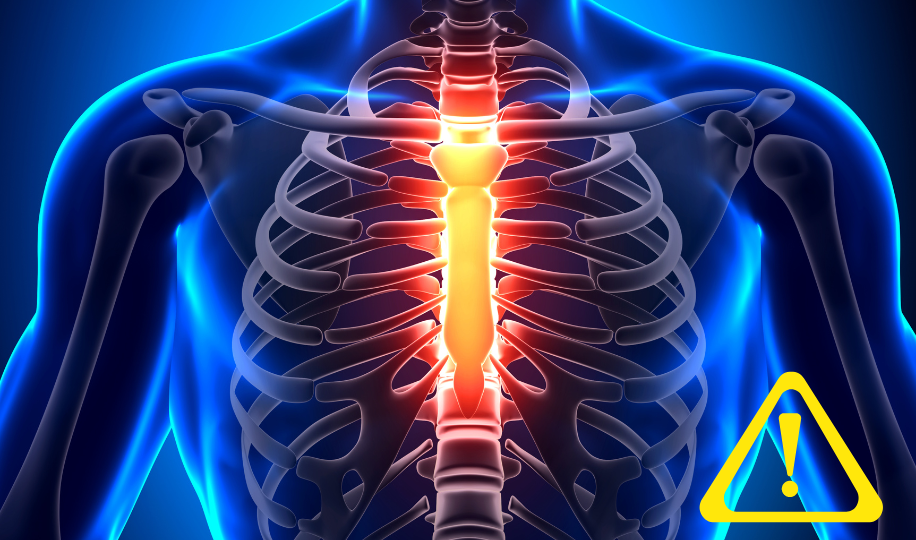Definition of Precaution: Action taken to prevent something dangerous, unpleasant, or inconvenient from happening.
Sternal precautions are measures taken to prevent the structures involved in cardiac surgery, the sternum or “breastbone”, from injury after surgery. When a patient has “open heart surgery”, the surgeon opens the chest wall by cutting through the length of the sternum (medium sternotomy). Once the surgery is complete, the sternum incision must be closed and stabilized. This is typically completed by wiring or suturing the two parts of the sternal bone back together. Additionally, sutures or staples are used to close the skin incision. In order for the bones to heal they must stay approximated or close together. This is why surgeons prescribe sternal precautions to be followed post-surgery.

What are the Sternal Precautions?
Disclaimer: Sternal precautions, even “traditional” sternal precautions, vary depending on the hospital or surgeon. Therefore, it is always best practice to check with your patient’s surgeon if you need clarification.
Traditional/ General Sternal Precautions:
- Do not lift more than 5-10 lbs
- Do not push or pull with your arms when getting into and out of bed or up from a chair
- Do not reach overhead (do not bring elbows above your shoulders).
- Do not reach behind your back
Other Common Considerations:
- Avoid twisting and deep bending
- Hug a pillow when coughing or sneezing
- Do not drive until cleared by your surgeon
- Report any popping or clicking noises.
What Surgeries Require Surgical Precautions?
Most Common: Coronary Artery Bypass Graft (CABG), heart valve replacement, or repair
Less Common: Congenital heart defect repair, aneurysm repair, left ventricular assist device or artificial heart placement, a heart transplant.
How Long do Sternal Precautions Last?
Sternal precautions are typically indicated for 8 weeks following surgery. This is because bone requires at least 8 weeks to heal and become stable. However, it may take longer, (8-12 weeks) to complete a full cardiac rehabilitation program encompassing other aspects impacted by cardiac surgery such as generalized strength and endurance.
Are Sternal Precautions Too Strict?
More recently there has been a movement towards less restrictive precautions following cardiac surgery. There is concern that the standard precautions can create a fear of movement, increase dependence on nursing staff or caregivers, and result in further muscular deconditioning due to the lifting restrictions. Participation in therapy with an emphasis on strength and endurance is key to regaining functionality, especially following a cardiac event. Reachers at Baylor University published an alternative protocol for sternal precautions, Keep Your Move in the Tube (KMIT). With this approach, there are no load restrictions as long as the patient keeps their upper arms close to the body. By limiting movement at the humerus during functional activities and exercises, stress to the sternum is minimized. Watch the following video to learn more!
Sternal Precautions and Cognitive Deficits
Cognitive deficits can significantly impact an individual’s ability to remember and comply with sternal precautions; other cognitive deficits such as problem-solving, planning, recall, and impulsivity can impact adherence as well. Read our other article for more detailed information on how to better treat your patients with precautions and reduce the risk of injury.
*Tip* Always make sure to document that you as the therapist have provided education regarding your patient’s precautions. Include if they were able to demonstrate understanding and how well the patient was able to comply within a session.
How to Explain Sternal Precautions to your Patient

First, see if your patient is aware of their precautions: Ask “Do you know what the sternal precautions are after heart surgery?” or even simpler “Do you know the movements you are not supposed to do after having heart surgery?”
I find it important to also educate the patient as to why the surgeon put these precautions in place. State, “The bone in the middle of your chest was cut in order for the doctor to get to your heart. The bone was put back together and is stabilized now with wires or sutures. There are muscles that attach to your breastbone and certain movements can cause pulling on the injured bone. By following these precautions, the bones in your chest can remain stable and have time to heal.”
Typically the first few days to weeks the patient is limited by pain. That pain is somewhat useful as it prevents them from over-exerting themselves or breaking their precautions. However, as their pain is controlled and subsides I find that patients are more likely to become lax at following the precautions and may require more prompting to continue abiding by the precautions.
Explain the sternal precautions that your patients have and how each relates to a functional task.
- Do not lift more than 5-10 lbs- carrying a hamper of clothing, picking up a small dog or child, taking out the garbage
- Do not reach your arms overhead- brushing the top of your head, reaching for a plate in an upper cabinet, pulling your shirt overhead
- Do not reach behind your back– grabbing something out of your back pocket, wiping, putting on a jacket or front open shirt
- Do not push or pull with your arms– getting out of bed, up from a chair or toilet, getting out of a car
Once you have gone over the sternal precautions, see how the patient complies during an activity like getting dressed or going to the bathroom. During this time you can intervene as necessary to provide education and training on utilizing compensatory dressing strategies and adaptive equipment. Check our other articles explaining in detail how to teach ADLs/ IADLs/ Transfers, etc with sternal precautions.
Conclusion
Occupational therapists are key to helping patients regain functionality and independence post-cardiac surgery. Providing clear and practical information on how to adapt daily activities and mobility tasks is important to achieve this goal. This article provides the basic information required to explain sternal precautions and assess compliance during an evaluation.
